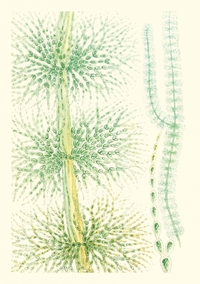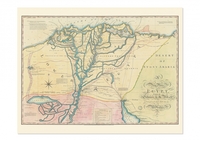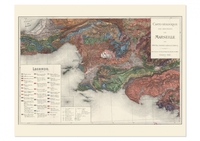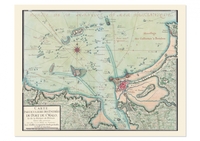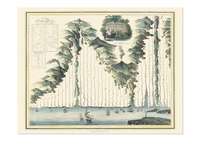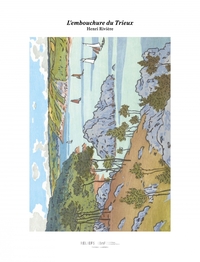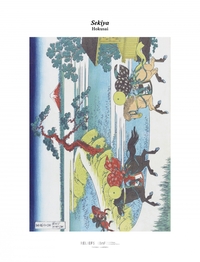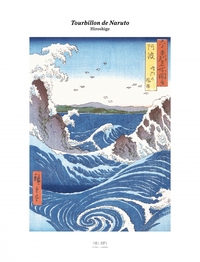Nous utilisons des cookies pour améliorer votre expérience. Pour nous conformer à la nouvelle directive sur la vie privée, nous devons demander votre consentement à l’utilisation de ces cookies. En savoir plus.
CARTE - MAPPA MUNDI DEBSTORF - GEOGRAPHIE NOSTALGIQUE
Reliefs - EAN : 9791096554539
Édition papier
EAN : 9791096554539
Paru le : 7 nov. 2019
18,00 €
17,06 €
Bientôt disponible
Pour connaître votre prix et commander, identifiez-vous
Manquant provisoirement
Notre engagement qualité
-
 Livraison gratuite
Livraison gratuite
en France sans minimum
de commande -
 Manquants maintenus
Manquants maintenus
en commande
automatiquement -
 Un interlocuteur
Un interlocuteur
unique pour toutes
vos commandes -
 Toutes les licences
Toutes les licences
numériques du marché
au tarif éditeur -
 Assistance téléphonique
Assistance téléphonique
personalisée sur le
numérique -
 Service client
Service client
Du Lundi au vendredi
de 9h à 18h
- EAN13 : 9791096554539
- Réf. éditeur : 96554.539
- Collection : EAU
- Editeur : Reliefs
- Date Parution : 7 nov. 2019
- Disponibilite : Provisoirement non disponible
- Barème de remise : NS
- Nombre de pages : 10
- Format : 0.20 x 22.40 x 34.50 cm
- Poids : 122gr
-
Résumé :
À partir de la reproduction de Miller, une fidèle réplique de la carte est faite sur trente feuilles de vélin dans les années 1950. La Carte d'Ebstorf s'inscrit dans la tradition de la cartographie européenne et chrétienne du Moyen Âge, et donne à voir les idées cosmographiques de son époque, selon la classique forme en TO, respectant ainsi la conception du Monde divisé en trois parties et traversé par douze vents, figurés par des cercles dans l'océan cosmique. La carte représente des pays réels et des territoires sacrés voire imaginaires : en bas à gauche est située l'Europe, en haut le jardin d'Éden, et Jérusalem est le centre du monde. D'autres lieux ou éléments bibliques sont visibles telle la tour de Babel, Sodome et Gomorrhe, l'arche de Noé. On voit également Jésus-Christ formant une croix : sa tête est en direction du Paradis, ses mains délimitent les frontières du monde connu et ses pieds sont à Gibraltar, où l'océan Atlantique rencontre la mer Méditerranée. Les lieux indiqués sont placés et montrés comme sur des plans romains : en faisant fi des distances réelles et dans un ordre approximatif, pouvant être celui dans lequel un voyageur les trouverait sur sa route. Outre les références religieuses, la Carte d'Ebstorf a également des références classiques – Le Roman d'Alexandre, les écrits d'Hérodote ou de Pline l'Ancien –, et des influences scientifiques ou profanes – telles que l'Imago Mundi d'Honoré d'Autun ou les écrits d'Adam de Brême quant aux pays nordiques – elle montre aussi les symboles des quatre grands fleuves : le Nil, le Tigre, l'Euphrate et le Gange.
This huge mappa mundi (world map), 3.58 m by 3.56 m, is the largest known medieval map. It dates from the 13th century, although the exact date of its creation – somewhere between 1208 and 1250, or around 1300 - is still subject to debate. The map of Ebstorf respects the tradition of European and Christian cartography of the Middle Ages and illustrates the cosmographic ideas of the time. With the East at the top, it is drawn according to the classical form in TO (for Terrarum Orbis), thus respecting the conception of the world divided into three parts (Asia, Europe, Africa) and crossed by twelve winds, represented by circles in the cosmic ocean. The three continents are inscribed in the O of the ocean and are separated by the T formed by the Mediterranean and the Tanaïs rivers, today the Don (separating Europe and Asia), and the Nil (separating Asia and Africa). At the intersection of the two bars is located the city of Jerusalem, around which is hinged the world. The map represents real countries and sacred and imaginary territories: Garden of Eden, Tower of Babel, Sodom and Gomorrah, Noah's Ark... The world is inserted into the body of Jesus, who forms a cross: his head is in the direction of Paradise, his hands delimit the boundaries of the known world and his feet are in Gibraltar, where the Atlantic meets the Mediterranean. The places indicated are arranged as on Roman plans, that is to say, ignoring the real distances and in an approximate order, the one in which travellers would find them on their journey. In addition to religious references, the Ebstorf Map also relies on many classical sources – Herodotus, Pliny the Elder, the Amazons – or more recent - the Roman of Alexander, the Imago Mundi of Honoré d'Autun, the geographical chronicles of Adam of Bremen. It also shows the symbols of the four great rivers: the Nile, the Tigris, the Euphrates and the Ganges.
Gervais d'Ebstorf serait celui qui donne son nom à cette carte, l'une des plus anciennes et célèbres du monde. Derrière ce nom se cache peut être en réalité Gervais de Tilbury, chevalier, homme politique, écrivain et prévôt de la ville d'Ebstorf (en Basse-Saxe) au XIIIe siècle. Cependant, cette carte a également pu être simplement nommée d'après son lieu de découverte (en 1830), le couvent bénédictin d'Ebstorf, qui est probablement aussi son lieu de création. Elle a ensuite été reproduite en fac-similé par Konrad Miller en 1898, alors que l'originale a été détruite lors d'un bombardement à Berlin en 1943.
The paternity of this map is uncertain. It may have been named after its place of discovery in 1830, the Benedictine convent of Ebstorf (Lower Saxony), which is undoubtedly also where it was created. According to a commonly accepted hypothesis, it was drawn by a certain Gervais d'Ebstorf, or Gervais de Tilbury, knight, politician, writer and provost of Ebstorf in the 13th century. The medieval original was destroyed during the bombing of Berlin in 1943, but it was copied many times in the 19th century, as is the case of this facsimile reproduction by Konrad Miller in 1898.?




